Shri Bettada Bhairaveshwara Temple
Shri Bettada Bhairaveshwara Temple is one of the ancient Lord Shiva Temples which is located on top of Pandavar Gudda Hill, about 35 km from Sakleshpur in the Hassan district of Karnataka State, India. With an age of around 600 years, this temple boasts the beauty of the Western Ghats and the breathtaking panoramic views that one can spectacle from this location.
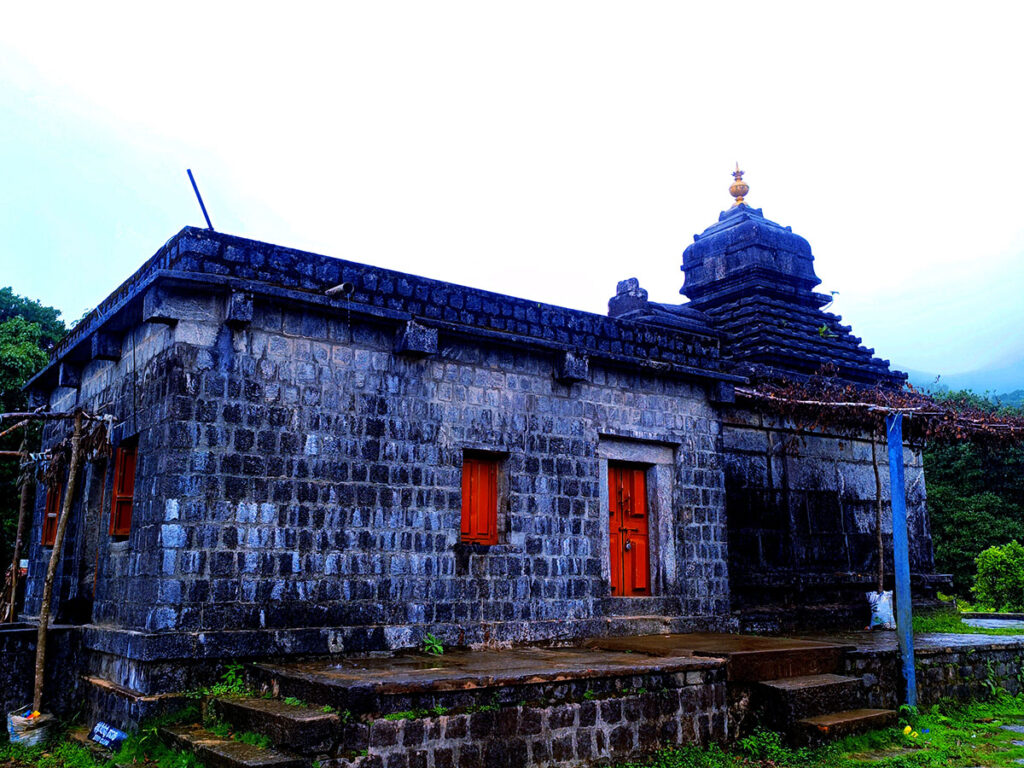
Contents
- 1 Shri Bettada Bhairaveshwara Temple History:
- 2 Legend of Shri Bettada Bhairaveshwara Temple:
- 3 Significance of Shri Bettada Bhairaveshwara Temple:
- 4 Myths and Beliefs of Shri Bettada Bhairaveshwara Temple:
- 5 Shri Bettada Bhairaveshwara Temple Timing and Rituals:
- 6 Places to visit near Shri Bettada Bhairaveshwara Temple:
- 7 FAQ:
- 8 How to reach Shri Bettada Bhairaveshwara Temple:
Shri Bettada Bhairaveshwara Temple History:
Temple Age: While it is not definitely proved, most estimates trace the temple construction to nearly 600 years. We can thus slot it in the 14th or 15th century.
Architectural Style: The black stones used in the Bettada Bhairaveshwara Temple construction give an alert toward the Kadamba style of Architecture. The Kadambas were a dynasty ruling parts of Karnataka between the 4th and 14th centuries. Their style of architecture is prevalent in many South Indian Temples.
Local Legend: A local legend connects the Bettada Bhairaveshwara Temple to the Pandavas, the five righteous brothers of the Hindu epic Mahabharata. According to local belief, the Pandavas spent part of their exile period here. The very hill on which the temple is located is named Pandavar Gudda, meaning “Pandavas’ Hill.”
Other uncertainties: Not much is written or known about the history of the construction and patrons of this temple.
Read More>> Sacred Kashi Vishwanath Temple: 11th Jyotirling of Liberation
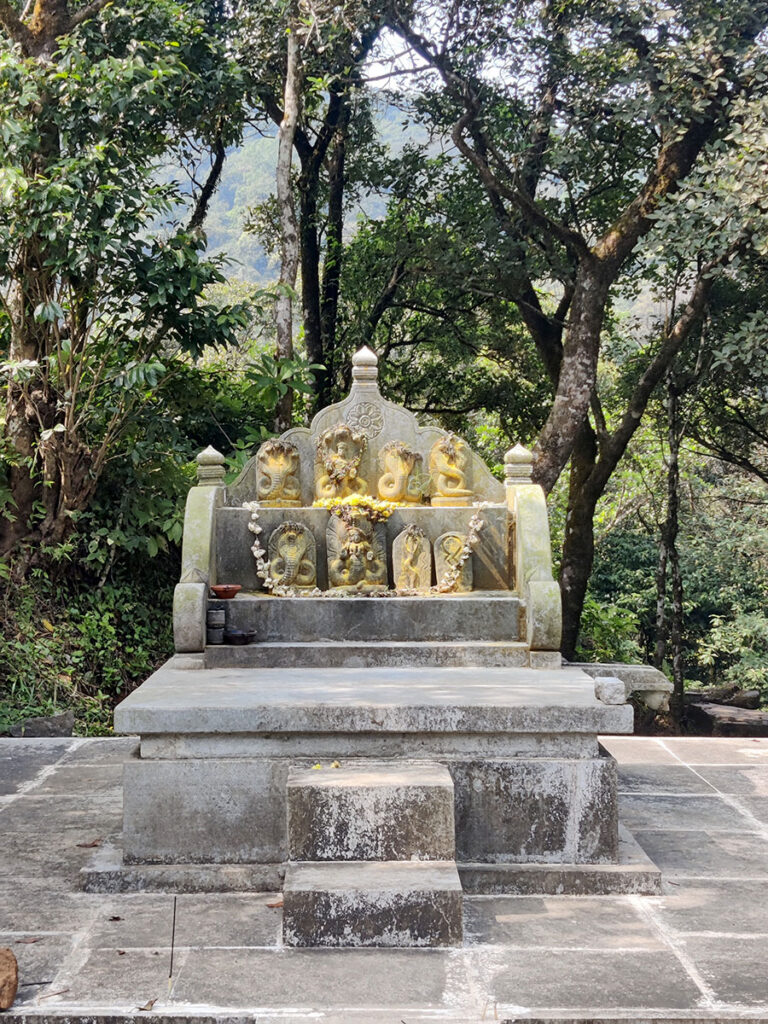
Legend of Shri Bettada Bhairaveshwara Temple:
The legend connected to Shri Bettada Bhairaveshwara Temple is traced back to the Pandava, or five righteous brothers, of the epic Mahabharata. Here’s the story:
Exiled Pandavas: It was in the gamble that they lost to their evil cousin Duryodhana and were sent to exile for 13 years. Within this exile period, there existed a special and very difficult one-year exile called Agyatvasa when they had to remain unrecognized or face its repetition.
Refuge: It is said that the Pandavas, of infinite devotion to Lord Shiva during Agyatvasa, found refuge in the hills lying next to the place of the present temple.
Temple Structure: According to officials, functioning as ardent devotees, the Pandavas are said to have constructed a shrine at this site for the purpose of offering prayers themselves to Lord Shiva. This shrine gradually developed into the structure known as the Shri Bettada Bhairaveshwara Temple.
Pandavar Gudda: The very hill on which the temple stands is known as Pandavar Gudda itself, meaning “Pandavas’ Hill,” thus further etymologically strengthening the connection with the legend.
Read More>> Danteshwari Temple Dantewada
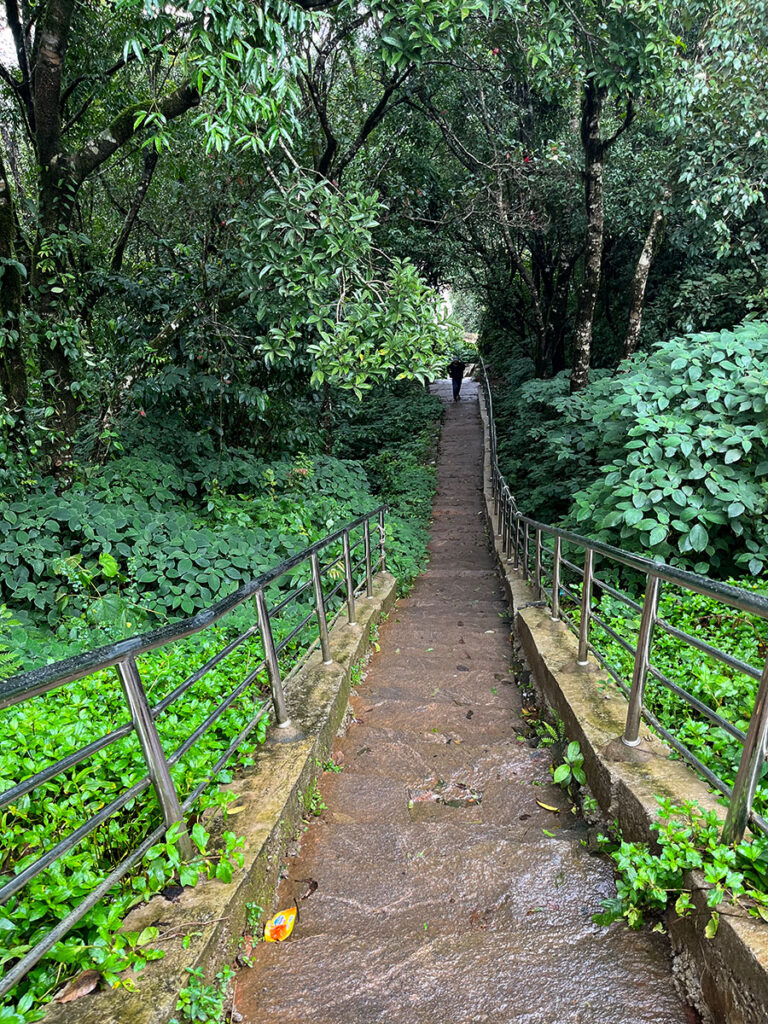
Significance of Shri Bettada Bhairaveshwara Temple:
Religious Significance:
Dedicated to Lord Shiva: The temple is mainly dedicated to Lord Shiva, one of the principal deities in Hinduism. Lord Shiva is reverently worshiped as the destroyer and regenerator of the universe, symbolizing the transforming power of the divine.
Spiritual Abode: The serenity of the temple and being situated amidst Western Ghats make it a popular pilgrimage spot for devotees aiming to attain spiritual solace and communion with the divine.
Devotional Practices: The devotees offer prayers and poojas and go around the lingam in Shri Bettada Bhairaveshwara Temple.
Historical Significance:
Ancient Heritage: The temple is considered to be about 600 years old and represents the rich regional cultural and religious heritage.
Architectural Style: The style of the temple, perhaps a replica of that of the Kadamba dynasty, imbibes within it the architectural trends prevailing at that time.
Association with the Mahabharata: The legend linking the temple to the Pandavas enhances historical importance by relating it to one of the most revered Hindu epics.
Cultural Significance:
Local Landmark: Being a well-known regional landmark, the temple has become an integral part of the local culture and identity.
Community center: Shri Bettada Bhairaveshwara Temple reflects a site of communal gathering for communities, mud festivals, and religious ceremonies, thereby contributing to cultural preservation and social cohesion.
Symbol of Faith: Reverentially speaking, the temple stands to show that the people of this region had strong faith and dedication, which has been sustained.
Read More>> Kalighat Kali Temple Kolkata
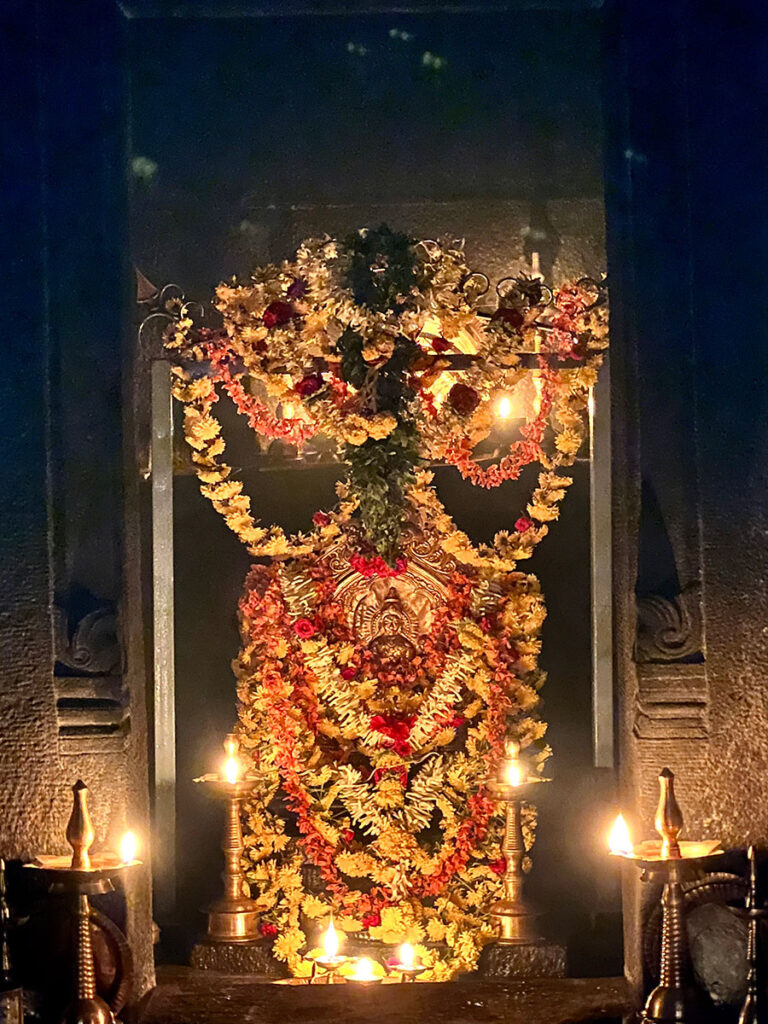
Myths and Beliefs of Shri Bettada Bhairaveshwara Temple:
- Bettada Bhairava’s Blessing:
The legends trace the origin of the temple to the Pandavas, the valiant heroes of the Hindu epic Mahabharata. The five Pandavas, during their exile, sought shelter in these hills where the temple exists. They were great devotees of Lord Shiva and so built a shrine to worship him. Moved by the devotion, Lord Shiva himself appeared as Bettada Bhairava, the fierce form of Shiva, and blessed them with his protection.
- The Treasure Buried:
One more exciting belief associated with this temple is the story of a treasure hidden somewhere in the temple’s premises. This legend says that a vast treasure trove of gold and precious stones lies buried beneath one of the stones in the temple. Many treasure hunts have been incited through these years by this belief, yet the treasure remains elusive, itself adding mystery to that of the temple.
- Stones That Whisper:
There is a peculiar belief that surrounds the black-stoned walls of the temple. It is said that if one places his ear against the stones, he can hear faint whispers. These whispers are supposed to be those of spirits or divine beings that were giving wisdom and guiding people when needed.
- Healing Powers:
Shri Bettada Bhairaveshwara Temple is also associated with healing powers. Devotees believe that the prayers offered in this temple and sacred water from the temple pond have several healing properties. The temple, therefore, is visited by a number of pilgrims who come to seek relief from ailments and pray for good health.
- The Wish-Granting Tree:
In the temple complex, there exists a highly respected tree considered to be the tree of wishes. The devotees tie colorful threads and ribbons onto the branches while praying or making a wish with all their heart. The threads would carry the wishes to the holy world and be granted by Lord Shiva himself.
Read More>> Shri Kalabhairaveshwara Temple Bengaluru
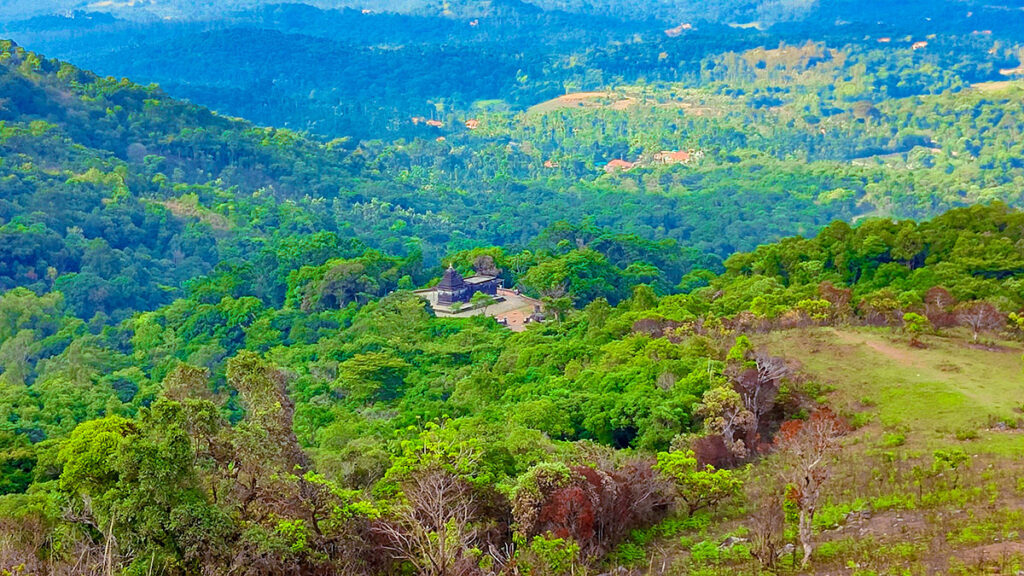
Shri Bettada Bhairaveshwara Temple Timing and Rituals:
The day begins from the Bettada Bhairaveshwara Temple from 6:00 AM in the morning and ends at 5:00 PM.
Given below are some of the rituals in the temple:
Mangala Aarti: This is the first Puja that is performed in Shri Bettada Bhairaveshwara Temple in the morning. It usually consists of offering prayers to Lord Shiva accompanied by harathi, lamps, along with hymns while one invokes His blessings.
Abhisheka: It is ritualistic bathing of the lingam, which is the sacred icon of Shiva, with various holy substances like milk, curd, honey, and ghee (clarified butter). Devotees believe this ritual purifies the lingam and brings good fortune.
Pooja: Throughout the day, devotees may perform their personal puja through which prayers, flowers, and incense are offered to the deities.
Evening: One finds many devotees gathering in the evenings to sing bhajans, hymns in praise of Lord Shiva.
Aarti: An evening aarti, like Mangala Aarti, is performed to close the rituals of the day.
Read More>> Srikalahasti Temple: 4th Air Vayu Lingam
Places to visit near Shri Bettada Bhairaveshwara Temple:
Agumbe: Located in the thickly forested Malenadu region of the Western Ghats mountain range in the Shimoga district of Karnataka, Agumbe is a village. Known as the “Cherrapunji of South India,” it receives an incredibly high level of rainfall every year and is therefore a paradise for nature lovers, wildlife enthusiasts, and adventure seekers alike.
Jog Falls: Also known as Gerusoppe Falls or Gersoppa Falls, it is the second-highest plunge waterfall in India after Nohkalikai Falls with a 335 meters (1,099 ft) drop in Meghalaya. It is located on the Sharavathi River in the Western Ghats of Karnataka state, India. The segmentation includes four parts—the Raja, Rani, Roarer, and Rocket. A good view of the falls is visible only during the monsoon season when the river is at its full flow.
Kodachadri also means “Hill of Jasmine”. It is one of the mountain peaks in the Western Ghats of Karnataka, India. Located at an altitude of 1,343 meters, or 4,406 feet above mean sea level, it is the highest peak in Shimoga district. The name ‘Kodachadri’ is derived from the Sanskrit word ‘Kutaja,’ meaning “Jasmine of the Hills”. Thus, it admirably suits this nice place with dense forests, lush green grasslands, cascading waterfalls, and breathtaking views.
Kundadri Hill: A peaceful, serene hilltop abode of the Jain temple and the panoramic view of the Western Ghats—so apt for meditation and enjoying nature’s serenity.
Sirsi is a town in the Uttara Kannada district of Karnataka, India. This town is located in the heart of the Western Ghats and is therefore noticed as a point of interest for any person who has a soft spot for nature. Sirsi is a town with great historical and cultural heritage, boasting several ancient temples and Jain basadis.
Yana Caves are two gigantic, black-crystalline, limestone rock formations in the Sahyadri hills of the Western Ghats located in Uttara Kannada district of Karnataka, India. Speaking genuinely, these caves are not caves but natural openings at the bottom of the colossal rock formation. Standing tall amidst the lush green forests, these two monolithic rock formations are famously known as Bhairaveshwara Shikhara, which is 120 meters high, and Mohini Shikhara, which is 90 meters high. These dramatic rock faces attract a lot of pilgrims, trekkers, and nature lovers alike.
Murudeshwar: Tucked away on the coast of Karnataka is a town called Murudeshwar, where spirituality comes alive with a wealth of scenic beauty. Here, the Arabian Sea washes its shores and the magnificent Western Ghats stand sentinel. The absolute crown jewel of this town is the world’s tallest Shiva Statue, towering 123 feet above the beach. Perched on a hillock, Murudeshwar’s ancient temple offers panoramic views and a peep into resplendent history. Besides religious significance, Murudeshwar offers an element of adventure with scuba diving off the Netrani Island.
FAQ:
- Where is Bettada Bhairaveshwara Temple?
This temple is located on top of a hill at the Western Ghats of Karnataka, India. The peak offers beautiful views of the surroundings.
- How to Reach?
The temple is accessible by road. The nearest big town is Sringeri, from where one can hire a taxi or drive only unto the temple. The path includes some trek, so be prepared for a short hike.
- What is the importance of Bettada Bhairaveshwara Temple?
It is devoted to Lord Bhairava, an incarnation of Lord Shiva. It is of spiritual importance with its serene atmosphere and panoramic view.
- What are the visiting hours?
The general timings when this temple is usually open are from early morning to evening. One is advised to visit during daylight to view the surrounding nature.
- Is there an entry fee?
No, there is no entry fee for visiting the temple.
- What to wear?
The visit requires modest and comfortable wear, suitable for a place of worship. Since it is a temple along a hill, it would be best to put on comfortable shoes for the treks. - Facilities available at the temple
Basic facilities such as drinking water and restrooms might be available, but it is always better to carry your own. There aren’t any big restaurants or shops nearby; therefore, it will be good if you bring some snacks along.
- Can I take photographs inside the temple?
Usually, the rules do vary. So it is best to enquire with the temple authorities before you take pictures inside the temple premises. It’s usually okay to take pictures of the surrounding nature.
- What could be the best time to visit Bettada Bhairaveshwara Temple?
It is advisable during the cooler months from October to March so that one can have a pleasant climate and view; the trek becomes much easier to ascend.
- Are there any festivals or special events at the temple?
Yes, the temple celebrates various Hindu festivals, especially those dedicated to Lord Shiva. Notable celebrated festivals here are Mahashivaratri, and it is conducted with lots of devotion.
- What are some nearby attractions?
Some of the most popular nearby attractions include Agumbe, Jog Falls, Kodachadri, Kundadri Hill, and Yana Caves. These spots offer a mix of natural beauty and adventure.
How to reach Shri Bettada Bhairaveshwara Temple:
By Air:
The nearest airport is Mangalore International Airport, which is about 130 km. we can hire a taxi or directly take the state-owned bus to reach Shri Bettada Bhairaveshwara Temple.
By Train:
At 80 Kms. away, the nearest railway station w.r.t. temple is in Shimoga. One can hire a taxi or a local bus to reach this temple.
By Road:
If you are coming from Bangalore: The temple is located at a distance of about 350 kms. from Bangalore. One can reach Shimoga via road or by bus and then continue further to the temple location.
If you are coming from Mangalore: The distance of Shri Bettada Bhairaveshwara Temple from Mangalore is approximately 130 kms. One can reach via NH169 either by driving or taking a bus.
